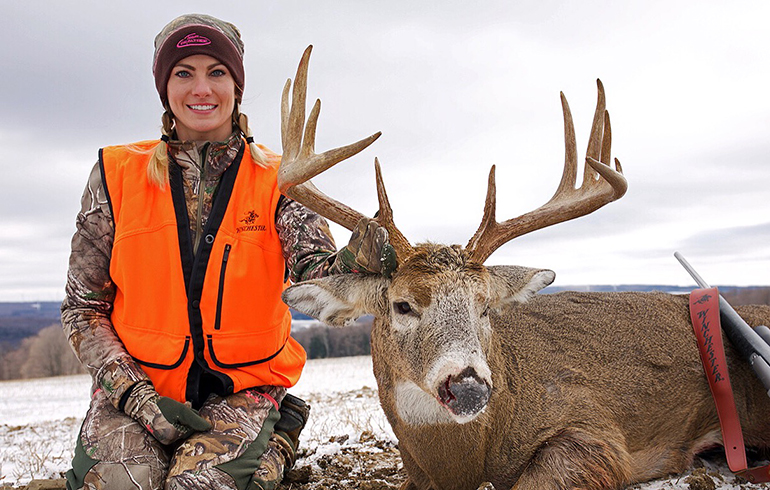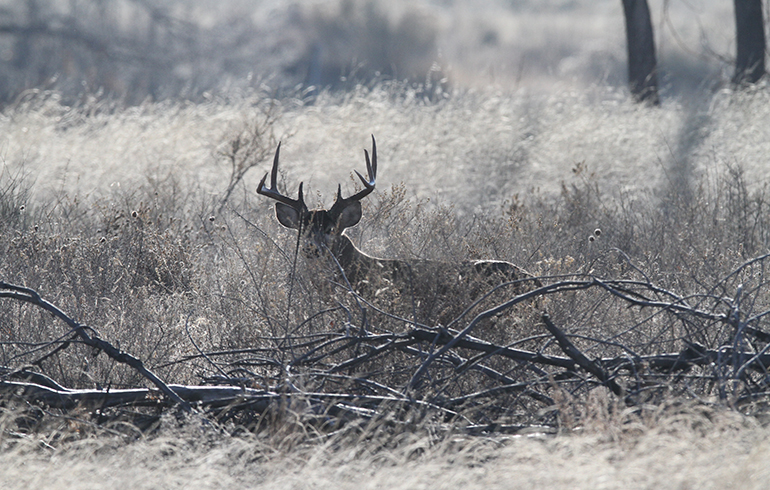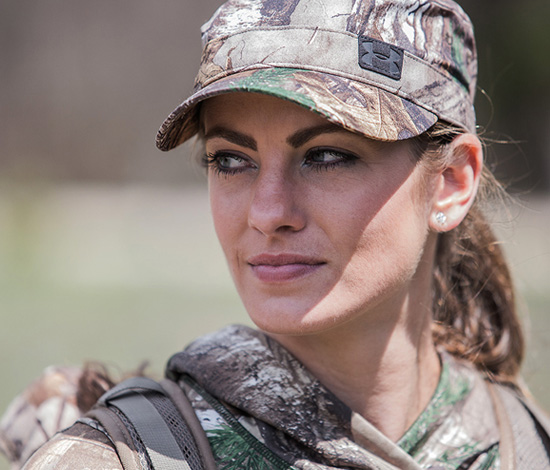Late-Season Whitetail Tips & Tactics
The clock is ticking…time is running out to get that big buck on the ground this season. To me, late season can be the easiest time to pattern mature bucks.
When it comes to sealing the deal, there are a few tricks I keep up my sleeve to utilize when the time is right.
Never let deer know they are being hunted
It may sound like a no-brainer and pretty simple, but it takes discipline. After gun opener, deer seem to be on edge. So, I keep the location I hunt low pressure and take every precaution to be stealthy in hopes that deer use my section of property as a safe haven.

Often times I will have a great feeling about a certain spot, but if the wind isn’t blowing in my favor it is critical to adapt and change up the game plan. I am a firm believer in hunting the wind. If I have the slightest hesitation about wind, I will move to a different stand or rely even more heavily on scent blockers.

When I was younger, I would be in the stand every second I could and wouldn’t pay much attention to weather details thinking that the more time I spent in the woods the better chance I would have at a big old buck. While this is true, I soon learned that it would require more precision in order to stay off the radar of a mature buck. These days I hunt smarter, not longer. I spend my time scouting and nailing down the prime spots based on changing weather conditions rather than spending all my time sitting in one spot and hoping for a deer to walk by.
Put on holiday weight
Typically, you can easily find me within close proximity of all the delicious food throughout the holidays, something that also holds true for the deer. In other words, if you find food then you find the deer! Bucks can lose up to 30% of their body weight during the rut so they tend to concentrate on filling their bellies and putting weight back on after the rut. Identifying several hot food sources in the area could be the key to success. Setting up near soybeans, wheat, or standing corn is a great place to start as you can bet that deer will be frequenting them as temperatures get cold. A strong cold front will typically get deer to food earlier in the afternoon and will likely stay longer. To be certain, scouting is critical to determine whether or not this is the case for your area in order to avoid spooking them if they beat you to your stand.
If there is no “hot” food source in the area, focus on overlooked areas such as brush piles, swamps, and blow downs. Old bucks are smart and know how to avoid hunters.
Take a picture
Having a number of trail cams up will increase chances at the target buck. They can provide useful information regarding deer movement patterns and timing. Trail cameras have come a long way since their introduction. I prefer those with wireless capabilities that send live pictures and video directly to my phone. This makes for an efficient use of my time when it comes to determining action of a particular area and whether or not I need to relocate. Setting up trail cams at various food sources can make the difference in going to the place where the deer actually are versus where you think the deer will be.

Patience pays off
We have all been there – we sit in the same stand for a few days, see nothing, switch stands and then BAM you get a picture of the buck you’ve been after on your trail camera during mid-day hours. Or, worse yet, you get the call from your buddy that shot that buck from your stand after you left. A buck isn’t going to do the exact same thing every day, therefore it’s important to remain confident in your plan! Hunting in the same spot for several consecutive days can increase the odds for when that buck decides to finally show up.

Cover is key
At this point in the season all the leaves have fallen and cover is very limited. Deer have gotten smarter from being hunted and there is a much higher chance of being spotted if you are sitting in a tree. For this reason, I only hunt stands that are set up on trees that have good coverage characteristics such as a large diameter, split branches, or a good back drop. Additionally, I will change up my camo patterns this time of year and tend to prefer hardwood patterns. I feel this pattern helps blend my silhouette in with the foliage-less oaks and maple trees I sit in.
The late season is also a great time to consider hunting from a ground blind. Ground blinds set at a major food source are an excellent and effective option!

Cut him off
Binoculars can be one of the greatest tools for helping you locate bucks and watch their movement patterns without getting too close. Scouting and knowing the popular travel paths are great, but if you don’t know which path they are going to choose you may be wasting your time. Instead, opt to watch bucks from afar. Once you see which path he chooses, hustle to beat him to the punch. For this to work there are several factors you need to take into consideration such as playing the wind, knowing travel routes and remaining hidden. For me this is a last-ditch effort.
Late season is often overlooked but in fact can be the best time to catch a mature whitetail buck on their feet, so bundle up and get to the woods! If you’re like me and get cold easily, check out my tips on how to stay warm from a previous blog.




